Understanding the animals that shared the Earth with early humans provides us with fascinating insights into human evolution, survival strategies, and the ecosystem dynamics of prehistoric times. As early humans traversed landscapes filled with challenges, they encountered an array of unique creatures. From mammoths to giant sloths, these animals played significant roles in the lives of our ancestors, either as sources of food, subjects of ancient art, or competitors for resources. Let’s delve into these interactions and the intriguing animals that roamed the Earth alongside early humans.
Woolly Mammoth
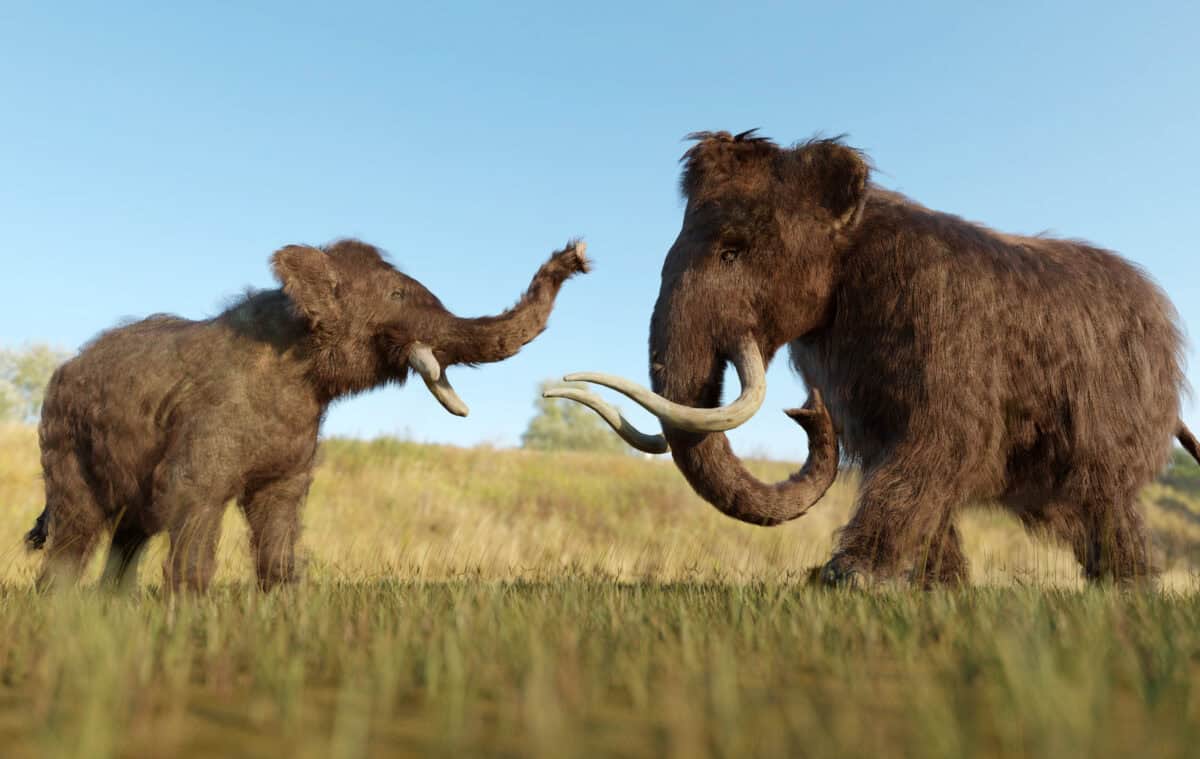
The woolly mammoth is perhaps the most iconic animal known to have lived alongside early humans. These colossal creatures were well-adapted to cold environments with their thick, shaggy coats and large tusks, which were used to forage through the snow for vegetation. Human encounters with mammoths are well-documented through cave paintings and archaeological evidence, indicating they were both hunted for food and revered. Mammoth bones and tusks were used to create tools, dwellings, and art, showcasing humanity’s resourcefulness in an icy age.
Saber-Toothed Cats

Saber-toothed cats, like the famous Smilodon, roamed the open plains and forests of prehistoric earth. Known for their elongated canine teeth, these predators posed a significant threat to early humans. Despite this danger, evidence suggests humans occasionally hunted them or scavenged their kills. The interactions between these cats and humans were likely cautious, with early humans relying on cooperative tactics and tool use to navigate the risks posed by such fearsome predators.
Giant Ground Sloths
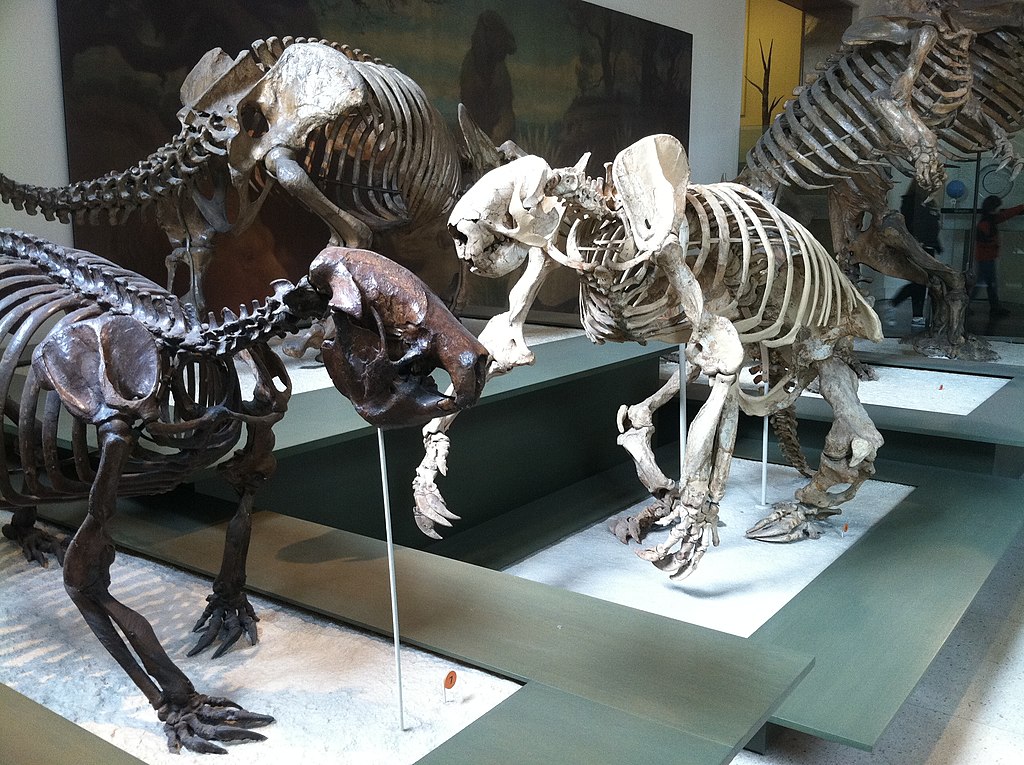
These colossal relatives of modern-day sloths inhabited regions of North and South America. Giant ground sloths could reach heights of up to 20 feet when standing on their hind legs, and despite their size, they were primarily herbivorous. The arrival of human populations in these areas coincided with the eventual decline of giant ground sloths, suggesting that hunting and environmental changes played roles in their extinction.
Woolly Rhinoceros
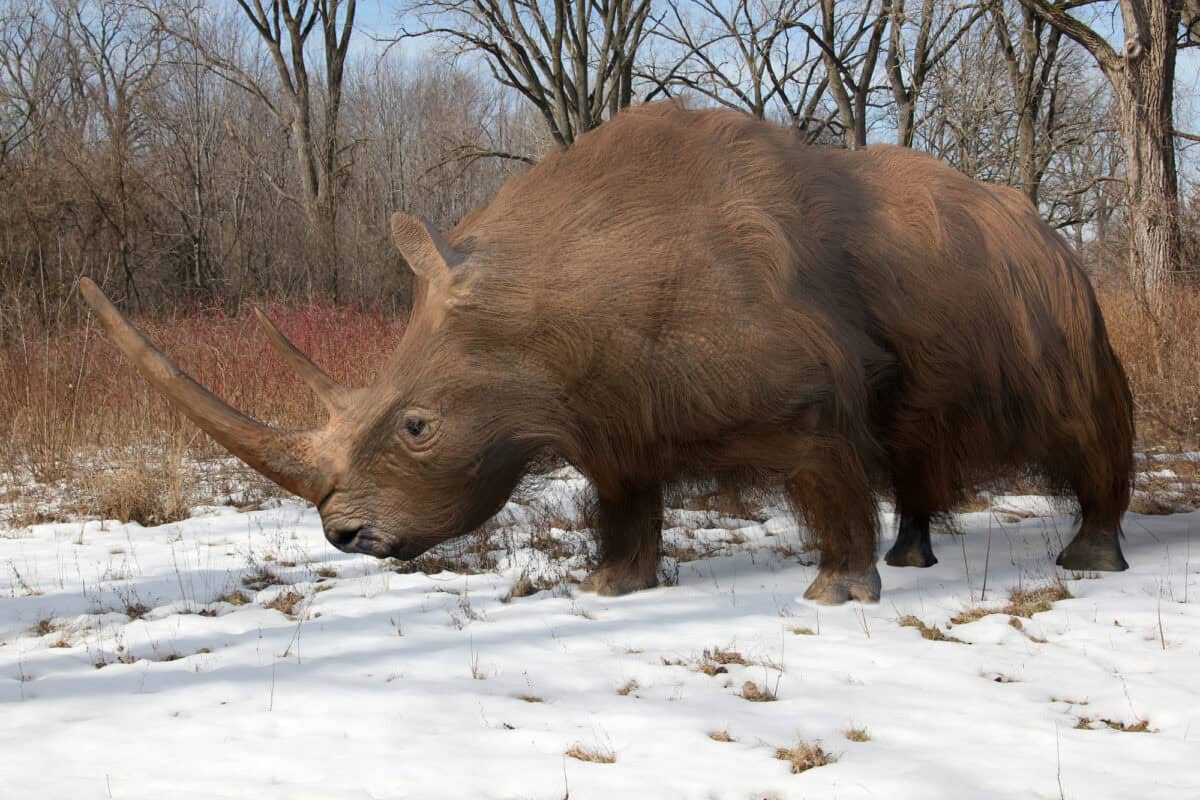
The woolly rhinoceros roamed the tundra and steppe environments of Europe and Asia, highly recognizable by its thick fur and large size. Much like mammoths, these animals contributed significantly to the subsistence of early humans, who hunted them for their meat and used their bones and horns for tools and other implements. Artwork found in caves shows that early humans were well-acquainted with these formidable creatures.
Irish Elk
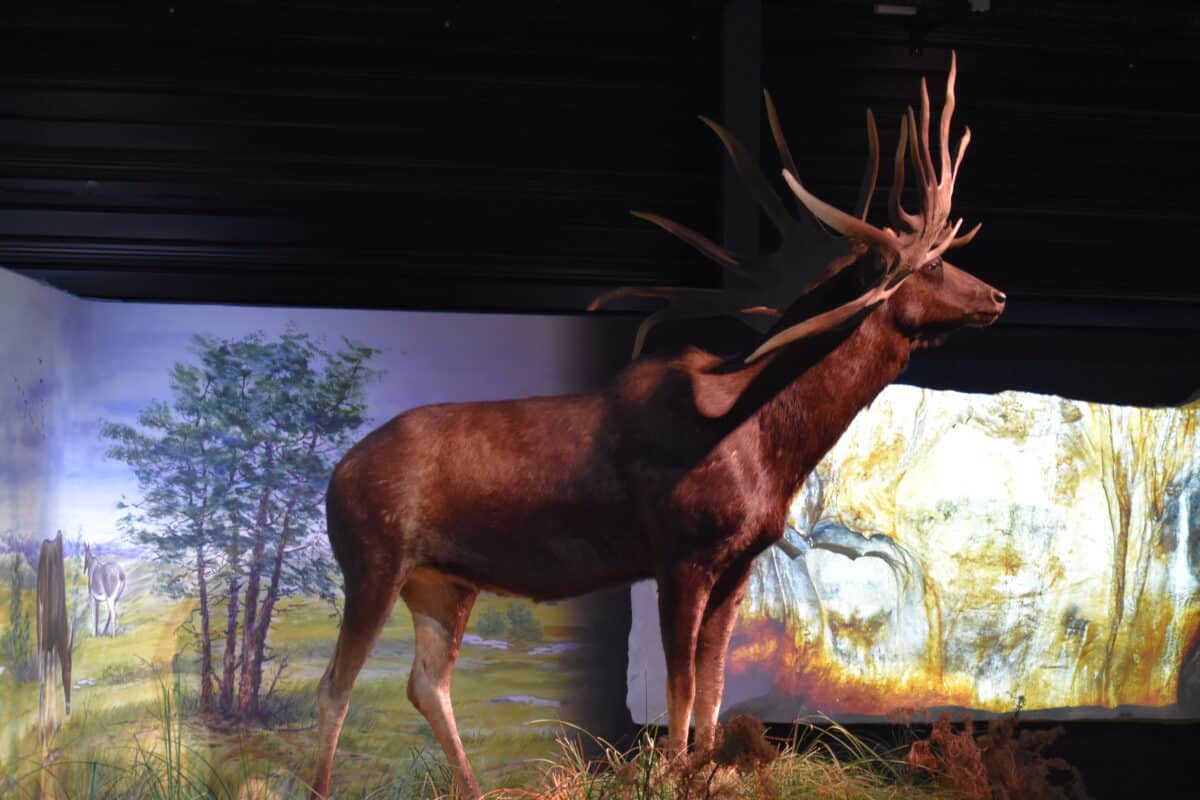
The Irish elk, also known as the giant deer, was renowned for its enormous antlers, spanning up to 12 feet across. These majestic creatures thrived in the open woodlands of Eurasia. While not directly hunted by humans as extensively as some other megafauna, their remains are often found at archaeological sites, indicating interactions possibly related to scavenging or opportunistic hunting during harsh conditions.
American Mastodon

Similar to mammoths but distinct in species, the American mastodon roamed across North America. These animals had straighter tusks and a different body shape compared to their woolly relatives and preferred woodlands over open tundra. Early humans likely encountered mastodons frequently and used similar hunting strategies to those employed against mammoths. Evidence of human tools near mastodon remains suggests a significant level of interaction.
Steppe Bison

Steppe bison were large herbivores that were abundant during the Ice Age, providing a vital food resource for early human populations. Their remains are commonly found in association with human artifacts, indicating that early humans relied heavily on these animals for survival. Looked upon as prized quarry, bison represented sustenance and clothing material through their hides, illustrating the complex relationship between predator and prey.
Dire Wolves

Immortalized in popular culture, dire wolves were larger relatives of modern gray wolves. These predators often roamed the same territories as humans, hunting similar prey species. Both cooperative pack behavior and considerable strength characterized their lifestyle. Early humans and dire wolves likely competed directly for resources, shaping the hunting and survival strategies of humans.
Cave Bears
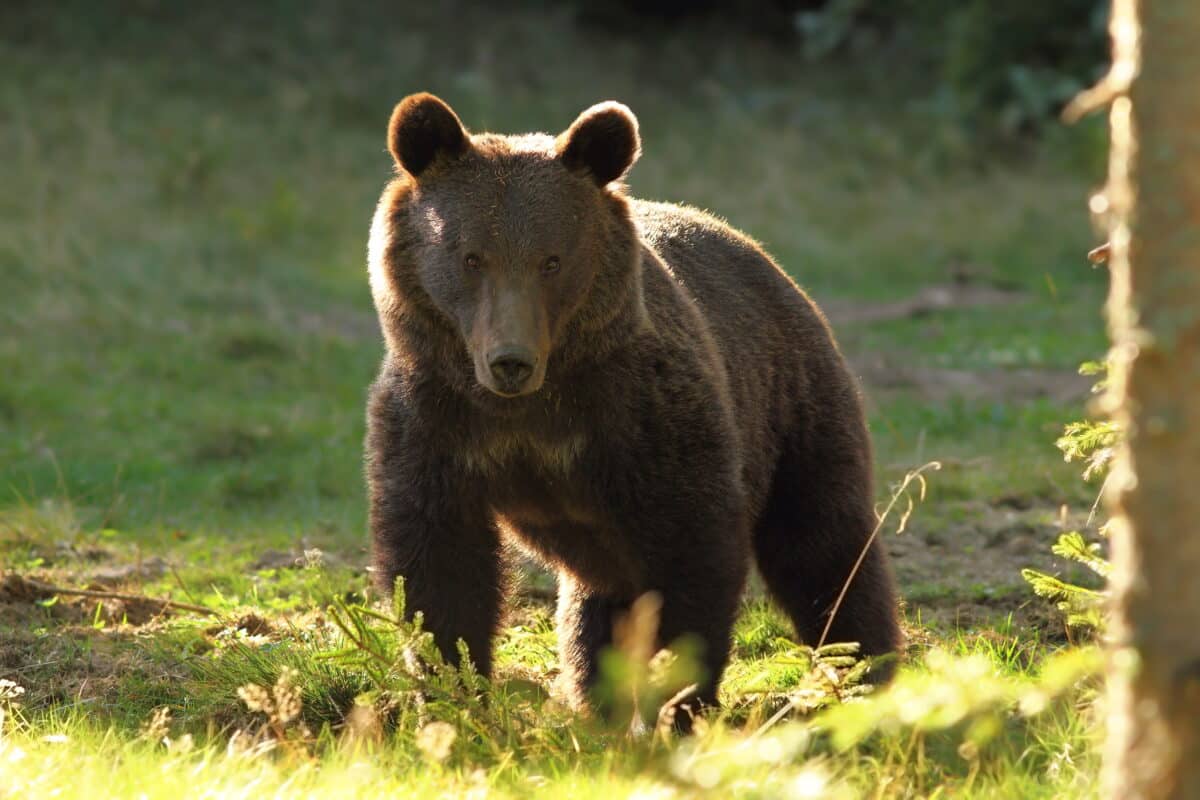
Cave bears were prevalent in Eurasian caves, where early humans also sought shelter. These large bears had significant overlaps with human habitats and may have competed with humans for the limited resources available during the Ice Age. While primarily considered herbivores, cave bears were formidable in size, leading early humans to approach such territories with caution.
Giant Beavers

Giant beavers, native to North America, were much larger than present-day beavers, weighing nearly 200 pounds. These animals played a crucial part in shaping the waterways and wetland environments frequented by early humans. Their large size made them a potential food source, although little direct evidence exists of frequent interactions between giant beavers and humans.
Elasmotherium

Often referred to as the “Siberian unicorn,” Elasmotherium was a distant relative of the modern rhinoceros, notable for its massive single horn. These animals are believed to have survived much longer than many other prehistoric species, possibly coexisting with early humans in Eurasia. While actual encounters might have been rare, the creature’s imposing appearance and distinctive horn would have left a lasting impression.
Hippopotamus

Unlike many other megafauna, the hippopotamus still survives today, but it’s essential to recognize that prehistoric species lived in areas far beyond their current range, including Europe and parts of Asia. Early humans likely crossed paths with ancient hippos near water bodies, as these massive herbivores posed both a risk and a potential food source. The strength and aggression of hippos necessitated careful navigation around their territories.
The Legacy of Early Human and Animal Coexistence

The animals that lived alongside early humans were not only significant to their survival but also shaped the cultural and social development of our ancestors. From the Ice Age giants to other species inhabiting land and water, these animals influenced hunting patterns, migration, and technological evolution. Their presence is immortalized in prehistoric art and the myriad artifacts left behind, offering a profound connection to a distant past where the natural world was intertwined with daily human life.
Conclusion
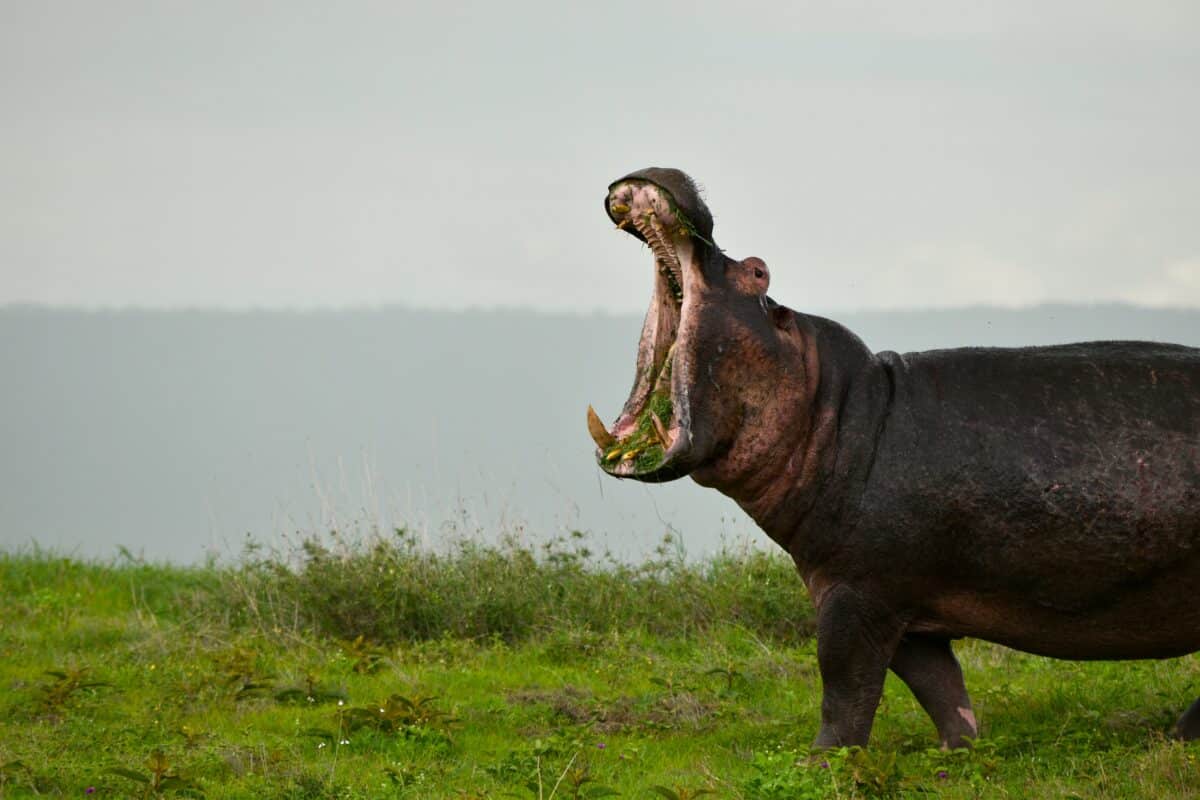
In conclusion, the story of early humans and their coexistence with these diverse animal species is a testament to adaptability and survival. Each of these creatures played a pivotal role in how humans interacted with their environment, contributing to the rich tapestry of human history and evolution. Understanding this dynamic interplay gives us a deeper appreciation for both our ancestors’ resilience and the intricate balance of the ecosystems they inhabited.
- 13 Venomous Creatures You Will Want to Avoid - August 9, 2025
- Top 12 Most Affectionate Dog Breeds to Own in America - August 9, 2025
- 11 Questions About Animal Sleep That People Ask Google - August 9, 2025

